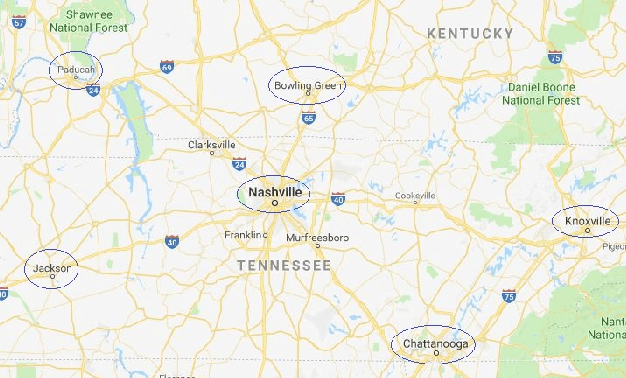Md Mosharaf Hossain
Interpreting Indirect Answers to Yes-No Questions in Multiple Languages
Oct 20, 2023Abstract:Yes-no questions expect a yes or no for an answer, but people often skip polar keywords. Instead, they answer with long explanations that must be interpreted. In this paper, we focus on this challenging problem and release new benchmarks in eight languages. We present a distant supervision approach to collect training data. We also demonstrate that direct answers (i.e., with polar keywords) are useful to train models to interpret indirect answers (i.e., without polar keywords). Experimental results demonstrate that monolingual fine-tuning is beneficial if training data can be obtained via distant supervision for the language of interest (5 languages). Additionally, we show that cross-lingual fine-tuning is always beneficial (8 languages).
Leveraging Affirmative Interpretations from Negation Improves Natural Language Understanding
Oct 26, 2022Abstract:Negation poses a challenge in many natural language understanding tasks. Inspired by the fact that understanding a negated statement often requires humans to infer affirmative interpretations, in this paper we show that doing so benefits models for three natural language understanding tasks. We present an automated procedure to collect pairs of sentences with negation and their affirmative interpretations, resulting in over 150,000 pairs. Experimental results show that leveraging these pairs helps (a) T5 generate affirmative interpretations from negations in a previous benchmark, and (b) a RoBERTa-based classifier solve the task of natural language inference. We also leverage our pairs to build a plug-and-play neural generator that given a negated statement generates an affirmative interpretation. Then, we incorporate the pretrained generator into a RoBERTa-based classifier for sentiment analysis and show that doing so improves the results. Crucially, our proposal does not require any manual effort.
A Question-Answer Driven Approach to Reveal Affirmative Interpretations from Verbal Negations
May 23, 2022



Abstract:This paper explores a question-answer driven approach to reveal affirmative interpretations from verbal negations (i.e., when a negation cue grammatically modifies a verb). We create a new corpus consisting of 4,472 verbal negations and discover that 67.1% of them convey that an event actually occurred. Annotators generate and answer 7,277 questions for the 3,001 negations that convey an affirmative interpretation. We first cast the problem of revealing affirmative interpretations from negations as a natural language inference (NLI) classification task. Experimental results show that state-of-the-art transformers trained with existing NLI corpora are insufficient to reveal affirmative interpretations. We also observe, however, that fine-tuning brings small improvements. In addition to NLI classification, we also explore the more realistic task of generating affirmative interpretations directly from negations with the T5 transformer. We conclude that the generation task remains a challenge as T5 substantially underperforms humans.
An Analysis of Negation in Natural Language Understanding Corpora
Mar 16, 2022



Abstract:This paper analyzes negation in eight popular corpora spanning six natural language understanding tasks. We show that these corpora have few negations compared to general-purpose English, and that the few negations in them are often unimportant. Indeed, one can often ignore negations and still make the right predictions. Additionally, experimental results show that state-of-the-art transformers trained with these corpora obtain substantially worse results with instances that contain negation, especially if the negations are important. We conclude that new corpora accounting for negation are needed to solve natural language understanding tasks when negation is present.
It's not a Non-Issue: Negation as a Source of Error in Machine Translation
Oct 12, 2020



Abstract:As machine translation (MT) systems progress at a rapid pace, questions of their adequacy linger. In this study we focus on negation, a universal, core property of human language that significantly affects the semantics of an utterance. We investigate whether translating negation is an issue for modern MT systems using 17 translation directions as test bed. Through thorough analysis, we find that indeed the presence of negation can significantly impact downstream quality, in some cases resulting in quality reductions of more than 60%. We also provide a linguistically motivated analysis that directly explains the majority of our findings. We release our annotations and code to replicate our analysis here: https://github.com/mosharafhossain/negation-mt.
Smart Weather Forecasting Using Machine Learning:A Case Study in Tennessee
Aug 25, 2020


Abstract:Traditionally, weather predictions are performed with the help of large complex models of physics, which utilize different atmospheric conditions over a long period of time. These conditions are often unstable because of perturbations of the weather system, causing the models to provide inaccurate forecasts. The models are generally run on hundreds of nodes in a large High Performance Computing (HPC) environment which consumes a large amount of energy. In this paper, we present a weather prediction technique that utilizes historical data from multiple weather stations to train simple machine learning models, which can provide usable forecasts about certain weather conditions for the near future within a very short period of time. The models can be run on much less resource intensive environments. The evaluation results show that the accuracy of the models is good enough to be used alongside the current state-of-the-art techniques. Furthermore, we show that it is beneficial to leverage the weather station data from multiple neighboring areas over the data of only the area for which weather forecasting is being performed.
 Add to Chrome
Add to Chrome Add to Firefox
Add to Firefox Add to Edge
Add to Edge